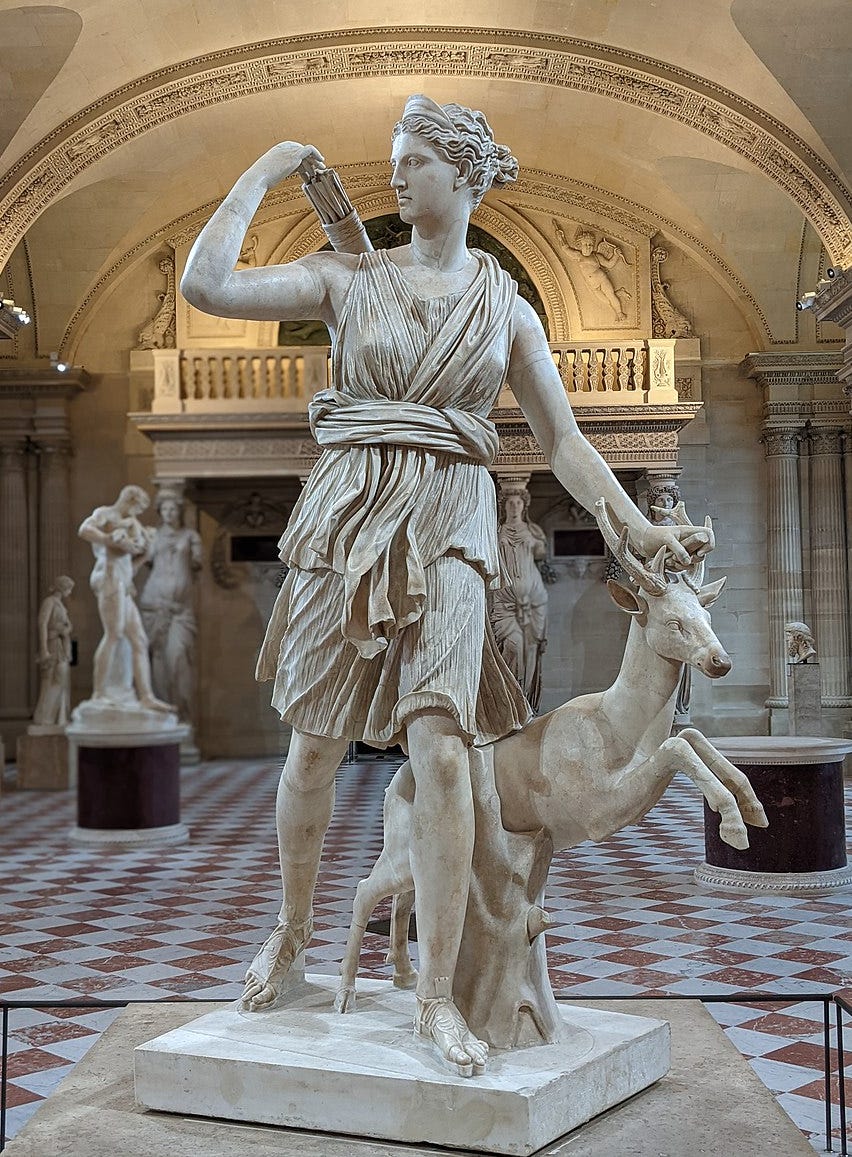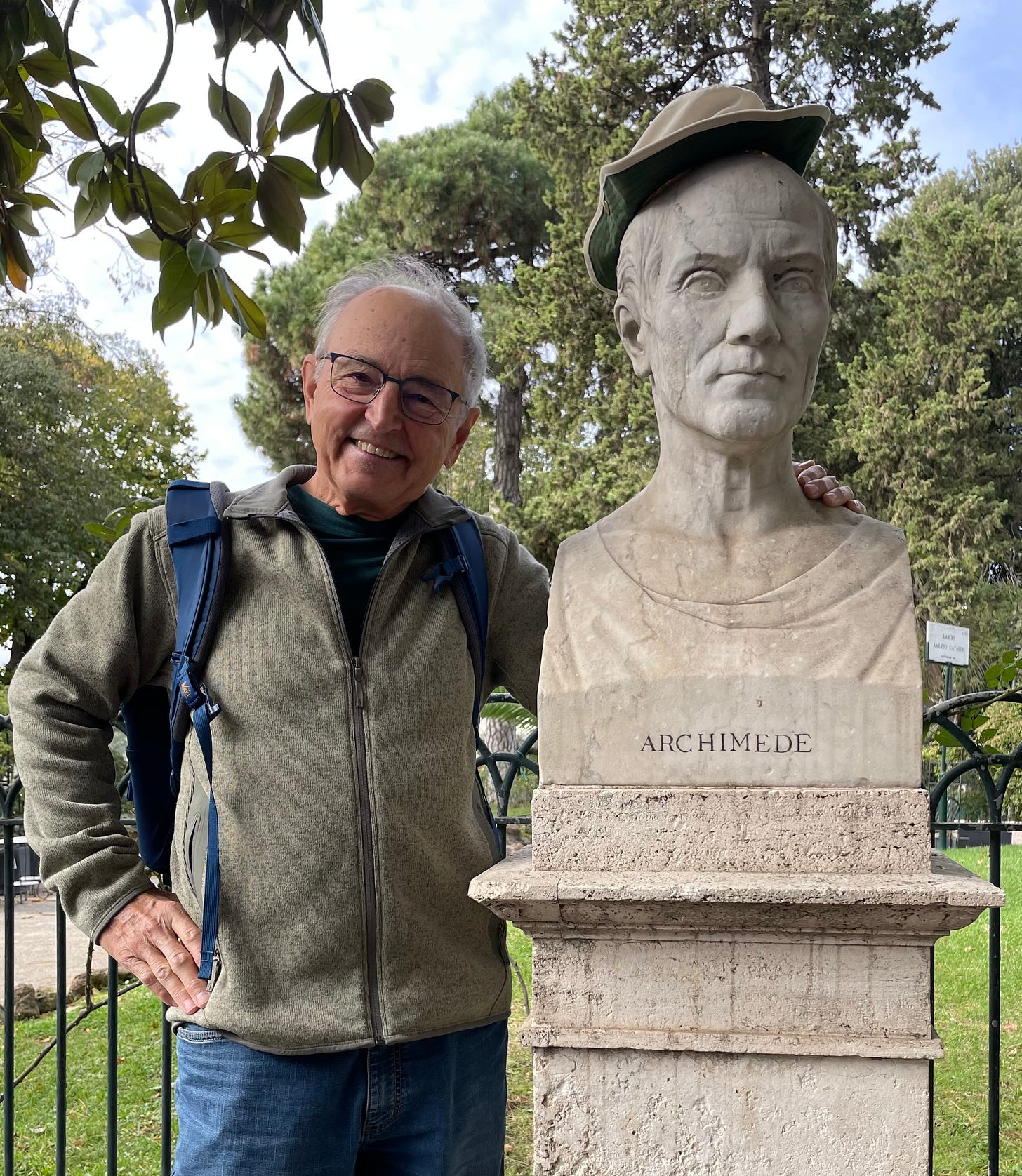Last November we spent 4 lovely days in Rome. Although the city was literally buzzing with tourists, we were able to enjoy ourselves without being overwhelmed by the crowds. This post is a continuation of a beautiful walk that starts near either Piazza Navona or the Pantheon and proceeds to Ara Pacis Augustae then to Piazza del Popolo.
We headed out of the Piazza through the Porto del Popolo, shown above, turned right, and followed the wooded pedestrian pathway that winds up the Pincian Hill, not one of the original seven hills of Rome, but lying within the Aurelian Walls built between 270 and 273 AD. The Pincian Hill is to the right in the photo above.
An alternate route is to stay within the Aurelian walls and take the Salita del Pincio, which leads to a marvelous overlook from the Terrazza del Pincio, shown in the above photo to the right above the east fountain. This route leads to the Obelisco Pinciano, an obelisk commissioned by the emperor Hadrian to mark the death of his young friend and companion Antinous in 130 AD. Contrary to some authorities on the internet, this one is not Egyptian but Roman.
The Borghese Gardens are considered the “green lungs” of Rome and its most popular park. Stretching from the Piazza de Popolo to the Museo e Galleria Borghese, 2 kilometers to the east, it covers an area of 80 hectares (almost 200 acres). Some important families had villas in this area. The gardens were developed in 1606 by Cardinal Scipione Borghese, who wanted to turn his vineyard into the most extensive gardens in Rome.
The park today owes its layout to Giuseppe Valadier, the same neoclassic architect, designer and urban planner who designed the Piazza Popolo and its fountains.
This statue of Victor Hugo is typical of the monuments you may discover as you wander through the park. It was donated to Rome by France in May 1905. Hugo admired the Risorgimento. The Risorgimento was an ideological and literary movement for Italian unification that resulted in the unification of Italy and Italy’s independence from foreign domination. The lion at his feet is a symbol of Hugo’s strength of genius.
The inscription is in French, from a speech given by Hugo in 1860, supporting Giuseppe Garibaldi, an Italian general who lead expeditions to unify the country and is considered one of Italy’s founding fathers. “What a triumph! What a wonder! …”
Families were enjoying the park, including this child taking a pony ride around the temple of Diana. Built in 1789 for Marcantonio IV Borghese, it originally housed a Roman copy of the Greek statue of Diana, Goddess of the Hunt.
Goddess Diana in the Louvre, Wiki Commons.
There are hundred of busts of famous people in the Borghese Gardens. One could literally spend days looking at them.
When I saw my friend Archimede I couldn’t help being a bit silly.
Nearby Archimede is a marvelous overlook called the Terrazza Viale del Belvedere. From here you can see Rome stretching out before you, from the “Wedding Cake” on the left to St. Peter’s Basilica in Vatican on the opposite bank of the Tiber.
A mandolin player serenaded us with “Girl from Ipanema” as we enjoyed the vista. Take your time in Rome. Don’t fight the crowds. Enjoy la dolce vita! As in nature, the slower you go, the more you see.
I thought I would finish up Rome today, but there is so much more to share and I am enjoying revisiting the Eternal City. Hope you are too~!
It’s still nippy here in Michigan, though the sun has come back out, a high of 14 C today and a low of 3 C! Freeze warnings in effect for Wednesday. But we are up to 13 hours and 41 minutes of sun, a whole hour more than in Manzanillo, where the high today is a sunny 25 C.
Wherever you are I hope the sun is shining!










